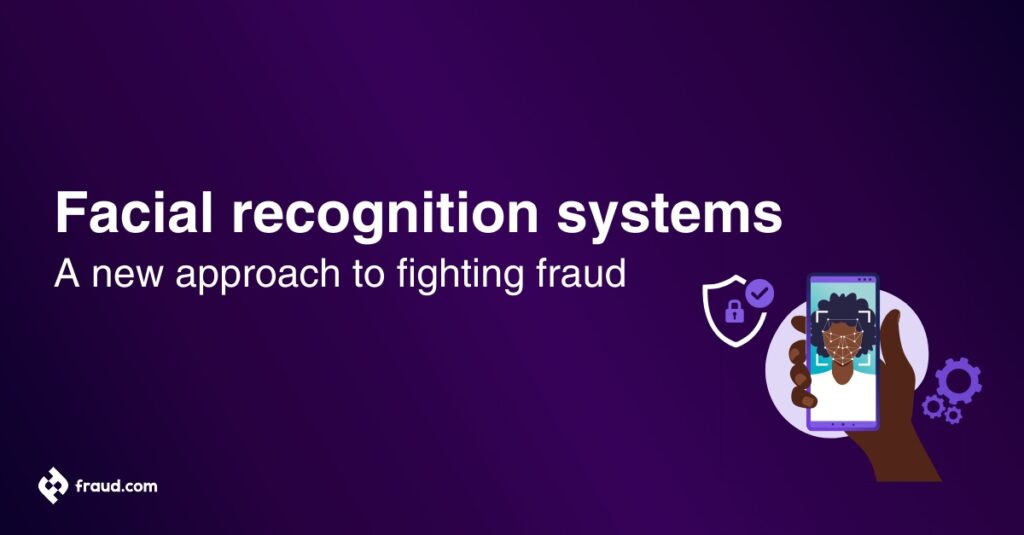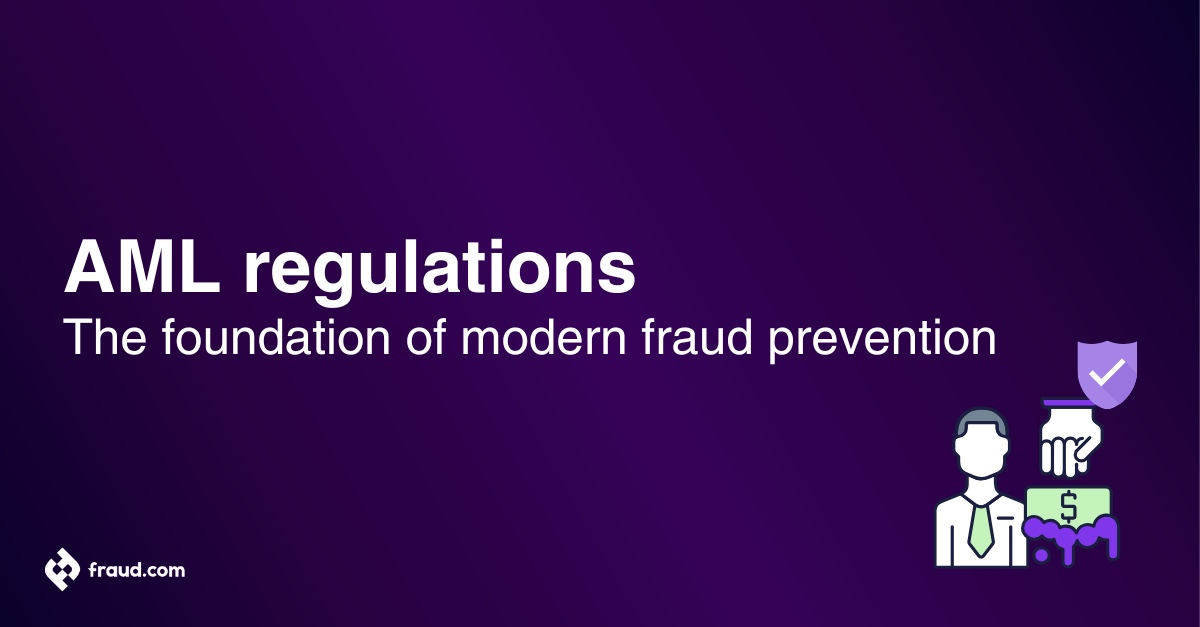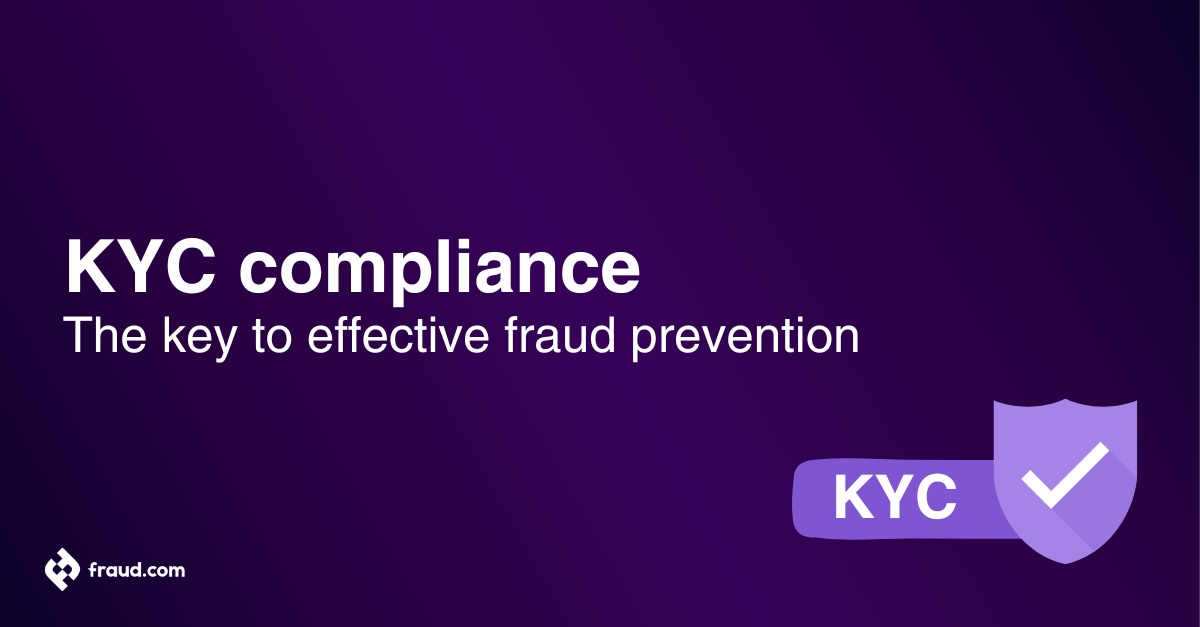With the fast advancements in technology, the complexity of combating fraud has reached unprecedented levels. Traditional methods of verifying identity and preventing fraud, while effective to a degree, often fall short against sophisticated schemes. This is why facial recognition systems comes in as a groundbreaking technology that is revolutionizing the way businesses and organizations recognises the identity of individuals while also having the ability of addressing fraud prevention.
By leveraging advanced biometric algorithms, facial recognition provides a highly secure, efficient, and reliable means of verifying identities, making it an invaluable tool in the fight against fraud. In this article, we will explore how facial recognition systems work, the benefits they offer, and the potential implications for privacy and security. Join us as we delve into this innovative approach to safeguarding both personal and organizational integrity in the digital age.
Table of Contents
ToggleWhat is facial recognition?
Facial recognition is a method used to identify or verify individuals, it is also also as a method of biometric authentication by analyzing their facial features. Unlike traditional identification methods such as passwords, PINs, or ID cards, facial recognition relies on the distinct geometry and appearance of a person’s face, making it a highly secure and convenient form of authentication. This technique is increasingly used in various sectors, from unlocking smartphones and securing access to buildings, to enhancing surveillance and monitoring systems.
Its non-intrusive nature and ability to operate in real-time provide an added layer of security, significantly reducing the risk of identity theft and unauthorized access. As facial recognition technology continues to evolve, its applications in everyday life are expected to expand, offering even greater security and efficiency. Facial recognition systems are at the forefront of this technological revolution, continually advancing in accuracy and reliability to meet the growing demands of security and convenience.
What are facial recognition systems?
Facial recognition systems are advanced biometric technologies designed to identify or verify individuals by analyzing their facial features. These systems capture an image or video of a person’s face and compare it against a database of stored facial images. The core of this technology lies in its ability to map the geometry of facial features, including the distance between the eyes, the width of the nose, the shape of the cheekbones, the contour of the lips, and the length of the jawline.
Through sophisticated algorithms, these systems convert facial features into a numerical code, known as a faceprint, which can then be matched with faceprints in a database. This process enables precise identification or verification, making facial recognition a powerful tool in various applications, from enhancing security measures to streamlining access control systems.
How does facial recognition work?
Facial recognition systems and technology operate through a series of sophisticated processes that transform the unique features of a human face into digital data for identification or verification. Here’s a step-by-step breakdown of how it works:
1. Image capture: The first step involves capturing an image or video of a person’s face using a surveillance camera. This can be done in real-time or from a stored image, such as those held by a media company or other sources.
2. Face detection: The system then detects the presence of a face within the captured image. Advanced facial recognition algorithms identify the face among other objects or people in the frame, isolating it for further analysis.
3. Facial features extraction: Once the face is detected, the system analyzes and extracts key facial features. This includes the distance between the eyes, the width of the nose, the shape of the cheekbones, the contour of the lips, and the length of the jawline. These measurements are used to create a unique numerical code known as a faceprint.
4. Faceprint creation: The extracted features are converted into a digital representation, forming the faceprint. This faceprint is a unique set of data points that represent the individual’s facial structure.
5. Database comparison: The created faceprint is then compared against a facial recognition database of stored faceprints. The system uses complex matching algorithms to find a match between the captured faceprint and those in the database.
6. Identity verification and authentication: Depending on the application, the system performs one of two functions:
- Identity verification: The system confirms that the identity presented is valid and true by verifying the authenticity of the individual’s proof of identity and matching the faceprint to the claimed identity.
- Authentication: The system confirms that the person is who they claim to be by comparing the faceprint to a specific stored faceprint.
7. Result output: Finally, the system provides an output based on the comparison. If a match is found, the person is identified or verified successfully. If no match is found, access may be denied, or further verification steps may be prompted.
8. Continuous learning and improvement: Modern facial recognition systems often incorporate machine learning and artificial intelligence algorithms that allow them to improve accuracy over time. They continuously learn from new data, enhancing their ability to recognize faces under various conditions, such as changes in lighting, angle, or facial expressions.
By combining these steps, facial recognition systems offer a reliable and efficient method for identifying people in photos and videos, making them valuable tools for enhancing security and preventing fraud.
The integration of facial recognition software and continuous updates to facial recognition databases ensure that these systems remain effective and up-to-date, protecting personal data and ensuring user safety.
Techniques in facial recognition systems
Facial recognition technology employs various techniques to accurately identify, verify and authenticate individuals. These techniques leverage advanced algorithms and methods to analyze and compare facial features. Here are some of the key techniques used in face recognition:
- Geometric-based methods: Geometric-based methods focus on the spatial relationships and measurements of key facial features. These techniques analyze the distances between landmarks such as the eyes, nose, mouth, and jawline. By mapping these geometrical relationships, the system can create a unique faceprint for identification and verification.
- Appearance-based methods: Appearance-based methods use the overall appearance of the face, rather than specific geometrical measurements. Techniques like Principal Component Analysis (PCA), Linear Discriminant Analysis (LDA), and Independent Component Analysis (ICA) are commonly used to reduce the dimensionality of facial images and extract significant features. These methods analyze the texture and patterns of the face to create a faceprint.
- 3D face recognition: 3D face recognition techniques capture the shape and contours of the face in three dimensions. This method uses 3D sensors to create a detailed map of the facial structure, including depth and curvature. 3D face recognition is more robust against changes in lighting and angles compared to 2D methods, making it highly accurate.
- Skin texture analysis: Skin texture analysis focuses on the unique texture patterns of the skin, such as pores, lines, and wrinkles. High-resolution imaging is used to capture these fine details, which are then analyzed and compared to stored templates. This technique enhances the accuracy of face recognition by adding another layer of biometric data.
- Neural networks and deep learning: Deep learning techniques, particularly convolutional neural networks (CNNs), have revolutionized face recognition. These networks are trained on large datasets of facial images to learn complex features and patterns. Deep learning models can automatically extract and recognize facial features with high accuracy, even under varying conditions.
- Hybrid methods: Hybrid methods combine multiple techniques to improve the accuracy and robustness of face recognition systems. By integrating geometric, appearance-based, 3D, and skin texture analysis methods, hybrid approaches can leverage the strengths of each technique, providing more reliable results.
- Thermal imaging: Thermal imaging captures the heat patterns emitted by the face. This technique is useful in low-light or night-time conditions, where traditional imaging may fail. Thermal face recognition analyzes the unique heat distribution patterns on the face, adding another dimension to biometric identification.
These techniques, often used in combination, enable face recognition systems to achieve high levels of accuracy and reliability. Continuous advancements in algorithms and computing power are further enhancing the capabilities of these systems, making face recognition a vital tool for security, authentication, and fraud prevention.
Which tools are used for face recognition?
Several tools and software are commonly used for facial recognition, leveraging advanced algorithms and technologies:
- OpenCV: An open-source computer vision library for image and video analysis.
- FaceNet: Google’s deep learning model for high-accuracy face recognition.
- Microsoft Azure Face API: A cloud-based service for facial recognition within the Azure Cognitive Services suite.
- Amazon Rekognition: An AWS tool for analyzing and recognizing faces in images and videos.
- Kairos: A platform offering facial recognition and emotion analysis APIs.
- Dlib: An open-source library with machine learning tools for facial landmark detection and recognition.
These tools are often used by developers and organizations to implement facial recognition solutions in various applications.
Examples of facial recognition technology
Face recognition technology is widely used across various industries and applications. Here are some notable examples:
- Smartphones and laptops: Devices like iPhones and Windows laptops use facial recognition for secure unlocking and user authentication.
- Airport security: Many airports employ facial recognition systems for passenger identification, streamlining check-ins and to improve security.
- Banking and finance: Banks use facial recognition to verify identities for online banking, reducing the risk of fraud in financial transactions.
- Law enforcement: Police departments use facial recognition to identify suspects and locate missing persons by comparing facial images against databases.
- Retail: Retailers implement facial recognition for customer identification and personalized shopping experiences, as well as to prevent retail fraud.
- Social media and apps: Platforms like Facebook and Google Photos use facial recognition to tag and organize photos automatically, identifying people in images.
These examples highlight the versatility and widespread adoption of facial recognition technology in enhancing security, improving user experience, and preventing fraud.
Applications and use cases of facial recognition
Facial recognition technology is used in a variety of sectors, offering numerous benefits for both security and convenience. Here are some prominent applications and use cases:
1. Security and surveillance: Facial recognition is widely used in security systems to monitor and identify individuals in real-time. It’s employed in public spaces, airports, and critical infrastructure to enhance safety and quickly identify potential threats.
2. Access control: Businesses and institutions use facial recognition to manage access to buildings and restricted areas. It provides a secure and convenient method for granting or denying entry based on identity verification.
3. Law enforcement: Law enforcement agencies use facial recognition to identify suspects, solve crimes, and locate missing persons. The technology allows for quick comparisons against criminal databases, improving efficiency in law enforcement operations.
4. Financial services: Banks and financial institutions employ facial recognition for identity verification during transactions and account access. This reduces the risk of fraud and enhances the security of online and mobile banking.
5. Retail and marketing: Retailers use facial recognition to enhance customer experiences through personalized services and targeted advertising. It can also help in loss prevention by identifying known shoplifters.
6. Healthcare: In healthcare, facial recognition is used for patient identification, ensuring the right patient receives the correct treatment. It also aids in managing patient records and securing access to sensitive medical information.
7. Travel and hospitality: Airlines and hotels use facial recognition for seamless check-ins and boarding processes, improving the efficiency and convenience for travellers. It enhances security and speeds up identity verification at airports and hotels.
8. Social media and entertainment: Technology companies integrate facial recognition into social media platforms to tag individuals in photos, organize images, and provide personalized content. It enhances user interaction and engagement on these platforms.
9. Education: Educational institutions implement facial recognition for attendance tracking, campus security, and access to facilities. It ensures a safe and efficient environment for students and staff.
10. Workforce management: Companies use facial recognition to manage employee attendance and access to secure areas. It simplifies time-tracking and improves security in the workplace.
These diverse applications demonstrate the versatility and effectiveness of facial recognition technology in enhancing security, improving user experiences, and preventing fraud across various industries. Notably, technology companies are at the forefront of developing and deploying these systems, impacting millions of American adults in their daily lives.
Benefits of facial recognition systems
Facial recognition systems offer numerous advantages, making them an increasingly popular choice for identity verification and fraud prevention across various industries. Here are some of the key benefits:
- Enhanced security: Facial recognition provides a high level of security by using unique biometric data that is difficult to replicate or forge. This makes it an effective tool for preventing unauthorized access and fraudulent activities.
- Convenience and efficiency: Unlike traditional methods that require physical tokens or passwords, facial recognition allows for seamless and quick authentication. Users simply need to present their face to a camera, streamlining the verification process and enhancing the user experience.
- Non-intrusive authentication: Facial recognition is a passive form of identification that does not require physical interaction with a device. This non-intrusive nature makes it more user-friendly compared to methods like fingerprint or iris scanning.
- Scalability and flexibility: Facial recognition systems can be easily integrated into various platforms and applications, from mobile devices and ATMs to security checkpoints and smart buildings. This flexibility makes it suitable for a wide range of use cases, from personal devices to large-scale public security implementations.
- Reduced fraud: By accurately verifying individual identities, facial recognition systems significantly reduce the risk of fraud. This is particularly beneficial in financial services, e-commerce, and other industries where identity theft and fraudulent transactions are prevalent.
- Improved user experience: Facial recognition eliminates the need for remembering complex passwords or carrying physical ID cards, offering a more seamless and user-friendly experience. This ease of use can lead to higher customer satisfaction and loyalty.
- Real-time detection and response: Many facial recognition systems offer real-time processing capabilities, enabling immediate identification and verification. This rapid response is crucial in scenarios such as security monitoring and access control, where timely decision-making is essential.
- Cost-effective implementation: Over time, the costs associated with facial recognition technology have decreased, making it a more affordable option for businesses of all sizes. Its ability to prevent losses from fraud further adds to its cost-effectiveness.
- Enhanced analytics and reporting: Facial recognition systems often come equipped with advanced analytics tools that can provide valuable insights. Businesses can use this data to understand user behaviour, improve service offerings, and strengthen security measures.
- Versatility across industries: From banking and retail to healthcare and law enforcement, facial recognition systems are versatile and can be adapted to fit the specific needs of various sectors. This broad applicability makes it an attractive option for a wide range of organizations.
In summary, facial recognition systems offer a robust, efficient, and user-friendly means of enhancing security and reducing fraud. As the technology continues to evolve, its applications are likely to expand, further solidifying its role as a key tool in modern identity verification and fraud prevention strategies.
Is facial recognition accurate?
Facial recognition technology has made significant strides in accuracy, particularly with the integration of advanced machine learning algorithms and high-resolution imaging. Modern systems can achieve high levels of precision, often exceeding 99% accuracy in optimal conditions. However, accuracy can be affected by factors such as lighting, facial expressions, and image quality. Ongoing advancements continue to improve performance, reducing error rates and increasing reliability across various applications.
Is facial recognition safe?
Facial recognition is generally considered safe when implemented with robust security measures and privacy protections. The technology itself is non-intrusive, requiring no physical contact, and is designed to operate seamlessly in the background. However, concerns about data security, privacy, and potential misuse remain. Ensuring the safe use of facial recognition involves stringent data protection practices, compliance with legal regulations, and transparent policies to safeguard individuals’ rights and privacy.
Other types of biometric identification technology
In addition to facial recognition, several other types of biometric identification technologies are used to enhance security and verify identities. These include:
- Fingerprint recognition: Fingerprint recognition is one of the most widely used biometric technologies. It involves scanning an individual’s fingerprint and comparing it to a stored template. The unique ridges and patterns on fingerprints make this method highly accurate and reliable for identification and authentication by using biometric fingerprint authentication.
- Iris recognition: Iris recognition technology scans the unique patterns in the colored part of the eye, known as the iris. This method is highly accurate due to the distinct and stable nature of iris patterns. It is commonly used in high-security environments, such as government and military applications.
- Voice recognition: Voice recognition technology analyzes the unique characteristics of a person’s voice, including pitch, tone, cadence and other voice biometrics. This method is often used for phone-based authentication and voice-activated systems, providing a convenient and hands-free way to verify identities.
- Palm vein recognition: Palm vein recognition involves scanning the unique patterns of veins in a person’s palm using near-infrared light. This method is highly secure and difficult to forge, making it suitable for applications requiring a high level of security, such as banking and healthcare.
- Retina scanning: Retina scanning technology captures the unique patterns of blood vessels in the retina, located at the back of the eye. This method is extremely accurate and is primarily used in environments where maximum security is required, such as secure access to critical facilities.
- DNA analysis: DNA analysis involves identifying individuals based on their unique genetic makeup. While not commonly used for everyday identification due to its complexity and cost, DNA analysis is highly accurate and is primarily employed in forensic investigations and medical research.
- Behavioral biometrics: Behavioral biometrics analyze patterns in human activities, such as typing rhythms, gait, and touchscreen interactions. This method provides continuous authentication and is often used to enhance security in online transactions and mobile applications.
These various biometric technologies each offer unique advantages and can be used individually or in combination to provide multi-factor authentication, thereby enhancing security and reliability in identity verification processes.
Preventing fraud with facial recognition systems
Facial recognition systems are highly effective in preventing fraud by providing secure and reliable identity verification. Here are key ways these systems help combat fraud:
- Enhanced security: Unique biometric data makes it difficult to replicate or forge identities, reducing unauthorized access and identity theft.
- Real-time verification: Immediate identity checks prevent fraudsters from using stolen or fake credentials.
- Multi-Factor Authentication (MFA): Combining facial recognition with other methods, like passwords, enhances security to fulfil Multi-Factor Authentication (MFA).
- Continuous monitoring: Real-time analysis detects and responds to suspicious activities promptly.
- Comprehensive databases: Regularly updated databases help identify known fraudsters and prevent repeat offences.
By leveraging these features, facial recognition systems provide robust protection against various forms of fraud across multiple industries.
Face recognition by Udentify
Udentify is a leading identity verification and authentication solution that uses advanced facial recognition with liveness detection. By analyzing unique facial features, Udentify ensures accurate identity verification and secure user biometric authentication, reducing fraud and preventing unauthorized access. Udentify’s technology is applied across various sectors, enhancing security and customer experiences.









